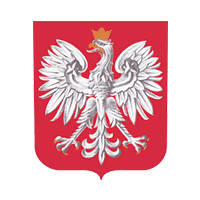Stanisław PRUSEK, Wojciech MASNY, Adam BARAŃSKI
It is currently estimated that about a half of the hard coal output in Poland originates from seams located in areas of rock burst hazard. The article shows information about 18 rock bursts and 14 other seismic events, which occurred between 2003 and 2012 in underground mines of Kompania Węglowa S.A. Moreover, the negative consequences of those dynamic phenomena in the roadways and longwall were described. The results of the analysis of roadways and longwall damages as well as their support may be an input for further work aimed at improving the stability of excavations under the dynamic loads. With respect to the roadways, it seems that it should begin work on strengthening floor, e.g. by the use of rockbolting or attempts to apply plastic lagging with enhanced strength. In the case of longwall in order to limit the negative effects of dynamic phenomena, it is important to strengthen the coal rib by rockbolting or the use of rockbolting and plastic lagging.
Wojciech NALEWAJSKI
The increased demand for petroleum-based hydrocarbon energy sources has resulted from the dynamic socio-economic growth in Poland in the last 25 years. The conditions of access to and supply of petrochemicals imposed by the geopolitical setup of Poland, its membership in the European Union, the global condition and the treaties Poland is party to, as well as the state of identification and exploitation of domestic oil and gas fields make the stockpiling of volatile and liquid petrochemical hydrocarbons a necessity.
The domestic borehole mining sector has been largely successful in the last decade, gathering valuable experience in the construction and operation of underground cavern storage locations for natural gas (at KPMG Mogilno and KPMG Kosakowo) and oil and liquid fuels (KSiPMRiP Góra). The successfully applied state-of-the-art technology of hydrocarbon storage in rock salt deposits (i.e. domes and beds), as well as the ubiquity of the salt deposits with the favourable physical and chemical characteristics of the rock mass, predict that the contemplated stockpiling method has a great potential for improving the national energy security in line with environmental protection requirements and sustainable economic growth.
Borys BORÓWKA
The article presents the characteristics of formal and legal requirements concerning protection of hard coal resources, in particular of thin coal seams. The analysis indicates that the legislation does not specify clearly the rules of the protection of the resources and derogations from the protection, which may give rise to uncertainties at documenting the deposits in different stages. From the case study performed on that basis it results that considering necessity of protection of resources firstly, there may be hypothetical situations where conservation of thin balance seam (without economic significance) may result in the unenforceability of exploitation of the seams economically attractive.
The problem and economic effects resulting from it as significant losses of the resources are presented in the paper on the basis of a hypothetical situation that could take place at “Pokój” Coal Mine, if planning of extraction of coal from a part of seam 500 group (at present have already been exploited) was under the relevant legislation currently in force. It was found that as a result of protection of 503 seam (0.6 m in thickness – uneconomic) could result in the unenforceability of mining of a part of seam 504 laid below (filching seam) and 502 seam laid above, whose mining would require earlier decompression through mining 504 seam. Consequently, the option of the mine’s production would be decreased by 6697 thousand tons, shortening the lifetime of the mine.
Changes to the legislation shall indicate in clear and unambiguous scope and manner the procedure and methods for protection of the resources and consequences resulting from abandoning such activities. In the cases verified in terms of technical and economical considerations, the regulations shall enable departure from such protection, e.g. reclassification to losses or another category of resources (not subject to protection).
Mirosław CHUDEK, Monika BYKOWSKA, Maciej BIAŁAS
Concerning the issue of the resistance of buildings to mining activities, this paper refers to the most popular simplified method as contemplated in the title thereof and developed by the State Mining Authority in the 1960s, and sometimes referred to as the localised method. Selected problems and issues relating to using this method in practice have been subjected to analysis in this article, namely: the lack of differentiation between the occurring horizontal tensile deformations and horizontal compressive deformations, the feasibility of evaluating the buildings constructed using new technologies, and/or with special bracing reinforcement, the soil load-bearing capacity analysis, and the evaluation of buildings located in the areas where no mining operations have been performed. Another problem discussed herein is the measurement and design calculation of expansion joints in segmented structures.
This paper proposes a modification of the method concerning the complementary table, the score rating of specific building length dimensions, and the rating of the deployed building reinforcement. As repeatedly emphasized in the literature, the contemplated simplified method is a statistical tool only and will always be encumbered with a certain error margin. Beyond any doubt, it is necessary to consider this approach when evaluating a large number of buildings within a relatively short time. However, the reliability of the analysis warrants the typing of buildings that feature dubious structural and material solutions or other unclear issues, followed by an evaluation of, for instance, 10% of the investigated structures using an expert-oriented approach.



